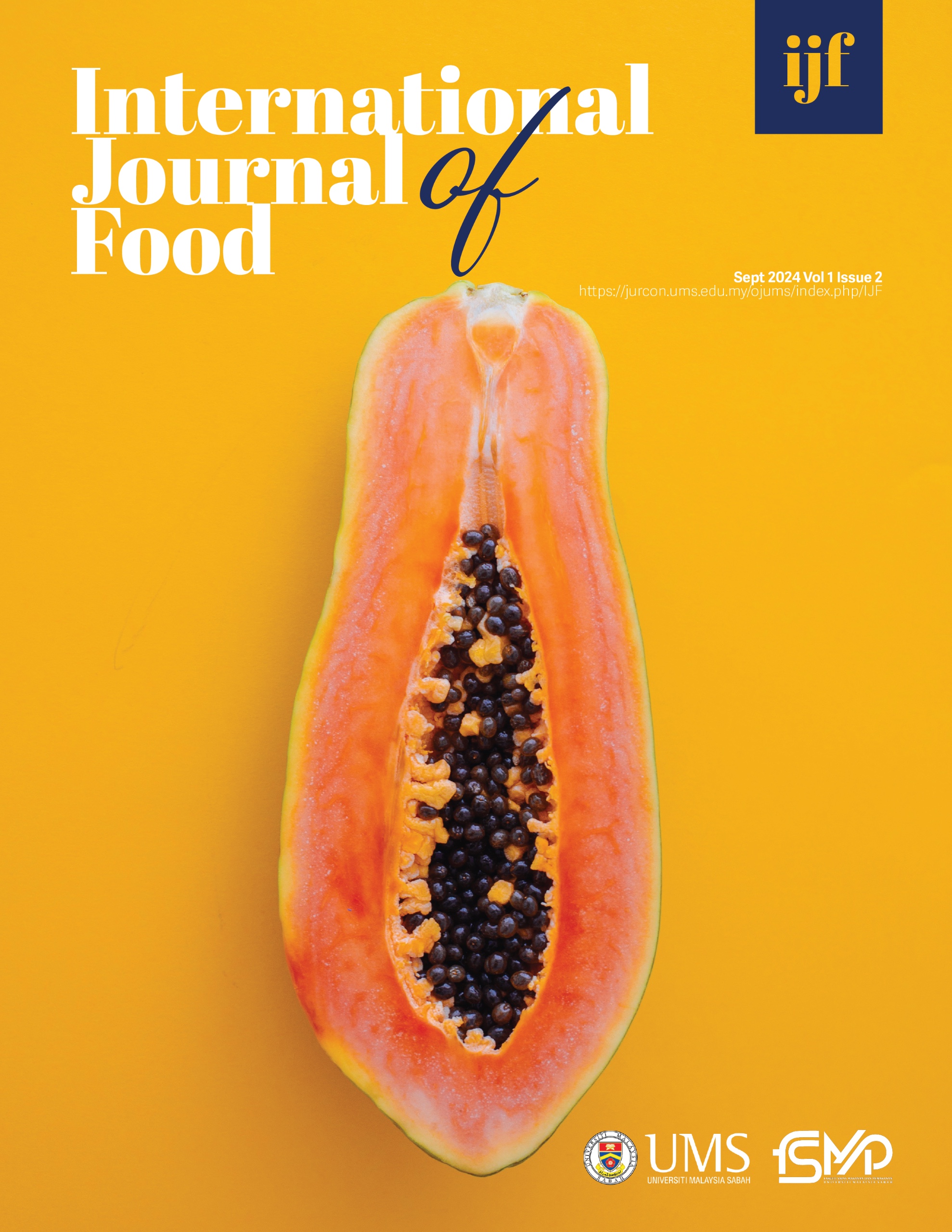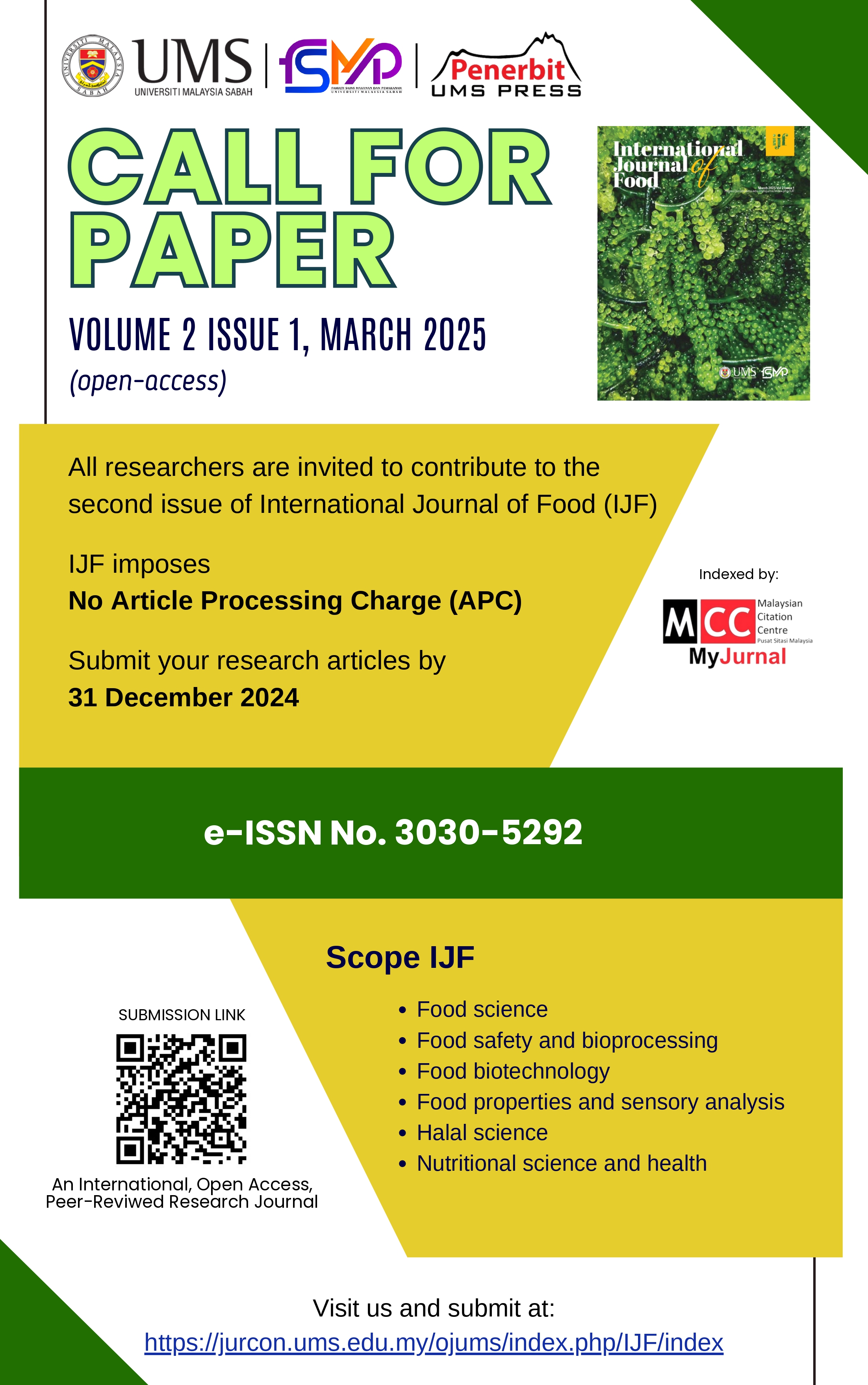The influence of Etlingera coccinea on the sensory acceptability and microbial safety of Dusun fermented fish
DOI:
https://doi.org/10.51200/ijf.v1i2.5211Keywords:
Traditional food; Bosou; Etlingera coccinea; fermented fishAbstract
This study aimed to identify the best formulation of Dusun traditional fermented fish (Bosou) using sensory evaluation, specifically a 9-point hedonic test. Etlingera coccinea, at concentrations ranging from 0% to 8%, was incorporated into fermented fish samples. Results showed that the 2% Etlingera coccinea formulation (F1) consistently outperformed others, maintaining the traditional appearance while enhancing aroma, taste, and overall acceptability. F1's superiority was confirmed by a Friedman test ranking, exhibiting the lowest mean rank among alternatives (p < 0.05). It struck a delicate balance between enhanced sensory attributes and traditional expectations, making it the best Bosou formulation. Proximate analysis of F1 and control Bosou formulations revealed significant increases in ash, crude fat, and crude protein content for F1, indicating improved nutritional profiles. Shelf-life analysis demonstrated a significant reduction in the total viable count and total yeast and mould counts during later storage periods. Cooking effectively decreased microbial counts, ensuring levels were at safe for consumption (4 log10 CFU/g for total yeast and mould, 6 log10 CFU/g for total viable count). A notable decrease in pH of raw and cooked samples over one month highlighted the recommendation to cook Dusun traditional fermented fish before consumption for safety. In conclusion, Etlingera coccinea showed promising sensory characteristics, nutritional content, and microbial quality, offering valuable insights for developing high-quality Bosou formulations.










